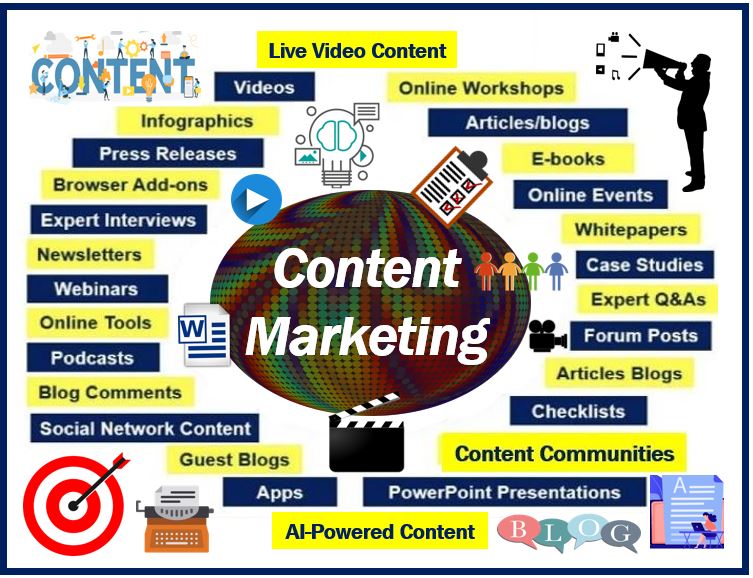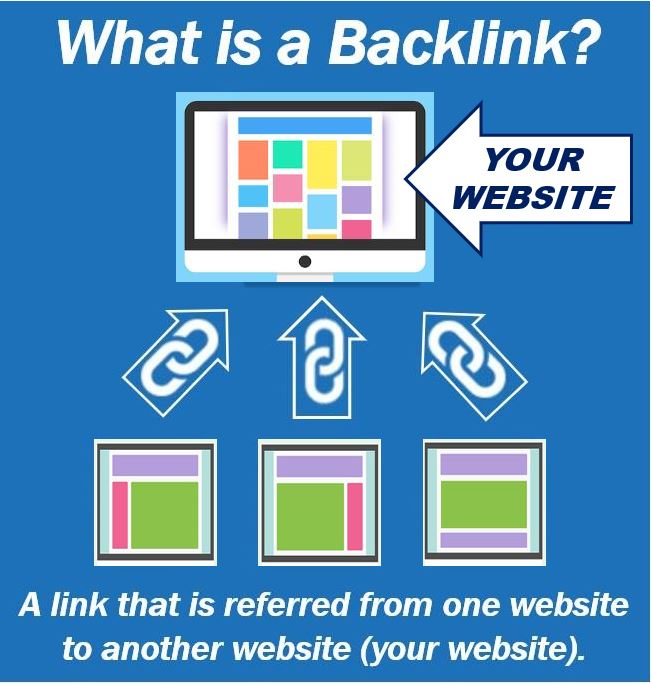Build it and they will come…
…isn’t really the best content marketing advice.
You could have the most well-written, informative, and engaging content in the world. But without content promotion strategies, no one will just “come” to your website.

Seven Content Promotion Strategies
Here are seven proven content promotion strategies that will supercharge your website’s exposure:
1. Create Short-Form Videos
Create and promote short-form videos about relevant topics and invite viewers to visit your website (or click a link) for more information.
Short-form videos are shorter than 60 seconds and often spread on social media networks like TikTok and Instagram.
They’re perhaps the most engaging form of content on the internet today.
Use short-form videos to help your content reach the most audience by piggybacking trends, like popular TikTok quotes, Instagram Reel hashtags, filters, and meme formats (along with the associated audio).
TikTok and Instagram both make content more discoverable to users who want to use the same video customizations. Just be sure to add links to your profile or embed links using stickers to re-route traffic back to your website.
2. Promote Data Visualizations on Pinterest and Instagram
Promote data visualizations on networks like Pinterest and Instagram to build your credibility as an information source in your industry.
Visual content such as infographics and image quotes are second to videos when it comes to generating user engagement. Data visualizations, like visual timelines and charts, also make data-rich information more readable and shareable.
Create these types of visuals easily using free drag-and-drop design tools like Canva and Piktochart. These tools have ready-to-use, customizable templates you can use as inspiration for your designs.
As a rule of thumb, try to have at least one useful, informative visual for every 300 words in your text-based content.
Apart from custom graphic designs, create annotated screenshots using tools like Gemoo Snap, Evernote, Skitch and Snagit.
Once published, consider repurposing and promoting your visuals on platforms like Instagram and Pinterest.
Don’t forget to include a link to bring readers back to your website.
3. Repurpose Your Visuals
Visual content isn’t necessarily hard to create, but it can be very time-consuming to draft new designs from scratch.
Make the most out of your visual content creation efforts by repurposing them into new post formats.
Content repurposing opportunities depend on the niche you serve.
For example, if you’re promoting professional services or SaaS products to a B2B audience, repurpose visuals into white papers or industry reports. For educators, speakers, or worship service providers, import your existing visuals into eLearning or presentation software—creating original marketing and promotional material should be easy from there.
Upon finishing repurposed content pieces, publish them on platforms that your audience uses.
Slideshow presentations, for example, are shareable on websites like SlideShare. As for white papers, industry reports, and other downloadables, tell your target audience about it on social media.
4. Use Content Syndication
Get more mileage out of your existing posts by re-publishing them on websites like Medium and LinkedIn.
This process is called content syndication, which lets you leverage the reach of these trusted platforms to gain quick exposure.
It may sound counterintuitive if your goal is to bring traffic to your website. After all, why would users visit your website if they can already read the whole article?
The answer is two Bs and three words: backlinks and branding.
When syndicating content on other sites, don’t forget to include a link to various posts on your website. Of course, you should also include the original post’s URL for readers who want to check the original post.
Publishing your content in front of a wider audience is also great for building brand authority. This makes your brand more credible and trustworthy in the eyes of internet users.
Just be sure to put your best foot forward and re-post your cream-of-the-crop content. Before reposting, review content writing tips, give your content one final polish, and spice it up with freshly-minted visuals.
5. Submit Guest Posts
Similar to content syndication, guest posting involves publishing content on a website you don’t own. This lets you capitalize on another website’s reach to bolster your online presence.
Guest posting also presents opportunities to get high-quality backlinks to your website.
With enough backlinks from authoritative sites, you can attain high rankings in search engine results and generate recurring organic traffic over time.
However, guest posting requires you to create new content from scratch as opposed to re-posting an article that’s already uploaded on your website. More importantly, you need to search for relevant websites in your niche that accept guest posts.
To find these sites, fire up Google and use keywords like:
- [Your Niche/Product] + “write for us”
- [Your Niche/Product] + “submit guest post”
- [Your Niche/Product] + “guest post by”
Review each website’s content writing guidelines and, as always, produce killer content that will magnetize readers.
6. Double Down on Your Most Successful Content
No matter how skilled you are, not everything you published will do well.
In most cases, brands that publish frequently have a handful of successful content pieces. Unfortunately, they’re overshadowed by more unpopular content—gathering virtual dust deep in their website.
By implementing a content analytics tracking system, you’ll be able to monitor the individual performance of your website content. Using Google Analytics, for example, can instantly reveal pages that get the most traffic.
Model your content strategy after these top performers to make the most out of your content creation budget.
7. Hunt for Easy Backlinks

Although SEO is generally considered a long-term strategy, it involves practices that can get you a quick spike in traffic—assuming you do it right.
For example, building links on high-traffic publications can pull visitors into your website from day one. But rather than investing time and money in full-length guest posts, try different methods to win free backlinks instead.
A typical strategy is to look for high-ranking websites with broken links, reach out to the website owner, casually mention your website, and subtly suggest linking to you instead.
Use tools like Broken Link Checker by Ahrefs to scan popular websites in your niche for broken links you can patch up with your own content.
Another widely-used strategy is the “Skyscraper Technique,” which involves the following steps:
- Step 1: Look for high-ranking content from competitors
- Step 2: Make something significantly better
- Step 3: Identify and reach out to your competitor’s backlink sources
The third step requires paid SEO tools like Semrush, SpyFu, and Ahrefs.
You can also outsource SEO content from freelancers or agencies that provide link building as an add-on. These service providers aren’t expensive and can offer campaigns tailored to your budget.
Conclusion
Content promotion strategies are essential for a thriving online brand.
Although content quality is important, it’s not the be-all and end-all of content marketing. You need to back up your content creation efforts with relentless promotion tactics to reach an audience, deliver your message, and win their trust.

